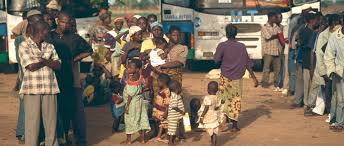A growing convergence of conflict, climate shocks, and waning international support has driven displacement in West and Central Africa to record levels, with nearly 13 million people uprooted, according to the UN Refugee Agency (UNHCR).
Commemorating the World Refugee Day on June 20, the Pretoria-based Institute for Security Studies highlighted in an analysis that “displaced Africans face the worst conditions yet as conflict and disasters increase, aid plummets and borders tighten.”
The region has seen a 48% increase in forced displacement since 2020, with Nigeria, Burkina Faso, and Cameroon accounting for over 80% of internally displaced persons (IDPs). In Chad, nearly 780,000 Sudanese refugees have sought shelter from civil war, overwhelming local resources. Calling it a “perfect storm,” Abdouraouf Gnon-Konde, UNHCR’s regional director stressed that “from conflict to climate shocks, protection risks are rising — particularly for women and children, who represent 80% of the the forcibly displaced.”
While over 14,600 people voluntarily returned to countries like Nigeria and Mali between January and April 2025, many face limited prospects due to persistent instability and slashed aid budgets. Humanitarian operations are straining under cuts, jeopardizing food, shelter, and medical care. The crisis reflects shifting global priorities.
Major donors, including the United States, United Kingdom, and the European Union, are cutting foreign aid and increasing border restrictions. Displacement from Sudan and the DRC now accounts for nearly half of all conflict-driven internal displacements worldwide. Meanwhile, economic desperation is fueling dangerous migration, with many becoming stranded en route. Experts urge a shift toward regular, circular migration policies and long-term development investment, warning that failing to act could deepen instability and human suffering across the continent.
